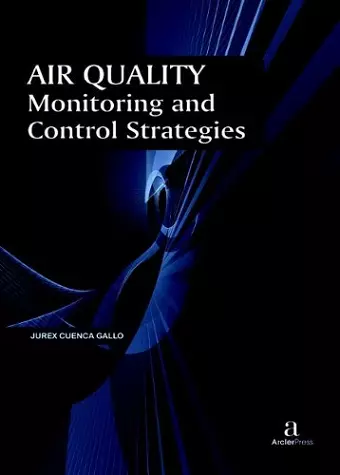Air Quality Monitoring and Control Strategies
Format:Hardback
Publisher:Arcler Education Inc
Published:30th Nov '16
Should be back in stock very soon

Air pollution can be described as the presence in the outdoor atmosphere of any dust, fumes, mist, smoke, other particulate matter, vapor, gas, odorous substances, or a combination thereof, in sufficient quantities and of such characteristics and duration as to be, or likely to be, injurious to health or welfare, animal or plant life, or property, or as to interfere with the enjoyment of life or property. Air pollution comes from a number of different sources. Most activities that burn fuel or use energy in one form or another can cause air pollution. Most air pollution issues are associated with power generation, industrial processes and road transport. Sulfur dioxide emitted from the combustion of fossil fuels like coal, petroleum and other factory combustibles is one the major cause of air pollution. Pollution emitting from vehicles including trucks, jeeps, cars, trains, airplanes cause immense amount of pollution. We rely on them to fulfill our daily basic needs of transportation. But, there overuse is damaging our environment as dangerous gases are polluting the environment. Carbon monoxide caused by improper or incomplete combustion and generally emitted from vehicles is another major pollutant along with Nitrogen oxides, which is produced from both natural and man-made processes. Ammonia is a very common by product from agriculture related activities and is one of the most hazardous gases in the atmosphere. Use of insecticides, pesticides and fertilizers in agricultural activities has grown quite a lot. They emit harmful chemicals into the air and can also cause water pollution. Manufacturing industries release large amount of carbon monoxide, hydrocarbons, organic compounds, and chemicals into the air thereby reducing the quality of air. Manufacturing industries can be found at every corner of the earth and there is no area that has not been affected by it. Petroleum refineries also release hydrocarbons and various chemicals that pollute the air and also cause land pollution. Air pollution instruments play an important role in the determination of emission factors. Detailed process engineering analyses and additional measurements using air pollution measurement instruments may be required to determine the appropriate pollutant emitting rates. Most facilities subject to air permit requirements must conduct some kind of emission monitoring to judge compliance with emissions limits. Also, air quality regulations in many countries...
ISBN: 9781680946147
Dimensions: unknown
Weight: unknown
278 pages